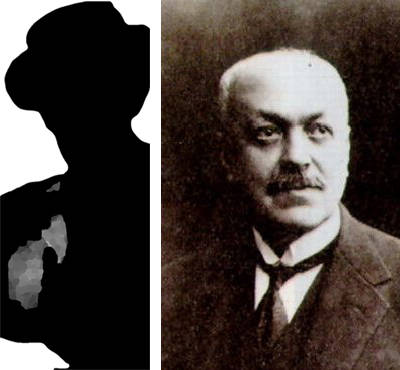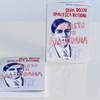Did James Joyce Call Bloom the Man who Had Called Himself Svevo?
Have you ever heard of Bloomsday? Well, for those who haven't, it’s not a lighter version of any religion’s Doomsday, nor a celebration of the blooming of flowers in Spring...
It’s a unique celebration dedicated to Leopold Bloom. He is neither a politician, a king nor an inventor, but a fictional character created by James Joyce to represent the modern “everyman”; he is an elaborate literary twist on the Ulysses’ archetype.
Sometimes, in fact, a book can be so revolutionary and the characters so groundbreaking that they become cornerstones, they split a historical era in two, changing forever our view of the world: They thus deserve a day of the year all for themselves.
Every year in Dublin, Ireland - where James Joyce was born and where the book Ulysses is set – June 16 is a day on which both Mr. Bloom and its creator are celebrated throughout the city with events, exhibits, and performances.The idea is to roam around and bring back to life the events of the book, which “happened” originally on June 16 1904
Ireland is not the only country that pays homage to James Joyce: nowadays Bloomsday is celebrated all throughout the world.
In a way, it’s a an Irish holiday. Just like St’ Patrick’s Day, it involves pub crawling and Irish music... the fascinating thing, though, is that it’s also very connected with the Italian tradition. And, even more surprisingly, with the Italian-Jewish tradition.
First of all Leopold Bloom is a Jew with Hungarian origins. Although in the book he’s not “technically” Jewish (his mother is Irish) his roots are important to define his personality and view of the world.Bloom is the first Alexander Portnoy and, to a certain extent, the first Woody Allen (although some passionates of the book could define what just stated a “blasphemy”): he’s a Jewish fictional persona that becomes an embodiment of Jewish archetypes, neurosis, trends of thoughts and deepest ideas, influenced by the common cultural and religious tradition.
So how is he Italian? Behind the character of Leopold Bloom there is actually a man called Ettore Schmitz, a Jewish man from Trieste who then became famous in Italy as a writer under the pseudonym of Italo Svevo; he was a writer that would turn Italian literature upside-down similarly to how Joyce did with the Anglo-American one.
Joyce found inspiration in him and reproduced in his work some of the Italian man's psychological traits and life events, also shaping "his Dublin" on the city of Trieste, located in the North-East of Italy.
In 1907, James Joyce became Italo Svevo's English teacher and mentor, a professional relationship that soon became a strong friendship. The two men shared a lot of “elective affinities”. Joyce realized his pupil was very curious about literature, new theories of psycho-analysis, philosophy and nontraditional writing styles. Svevo, son of Francesco Schmitz and Allegra Moravia, was actually a very educated man. In Germany he had attended the Brussel Institute where he had the chance to read Schiller, Goethe, Schopenhauer and his contemporary writers.
Trieste in those years was bursting with ideas, intellectuals, writers and it became a crossroad fro the literary and the publishing industry. Its economy was booming along with its culture: poets, artists and musicians created their groups, and gathered at events and parties hosted by very influential families.
Before Svevo met Joyce he had already tried to become a writer. He published, mostly at his expenses, Una Vita and Senilità but since his work did not receive much attention, he became a businessman. However, at the time he met Joyce, he was still involved with writing diaries, short stories and random thoughts that afterwards became the basis of a new revolutionary book: Zeno’s Conscience, a classic in modern literature that is now studied in every high-school and university.
Joyce’s Ulysses features an extensive and original use of the "stream of consciousness" technique, a style that allows the author to report his thoughts in written form without literary filters or rambling, often revealing hidden or strange implications.
Svevo, on the other side, is more rational in his style but in his book -a fictional diary published by a revengeful psychiatrist that wants to get back at his client- the border between conscious and subconscious thoughts is often not clear. If you analyze it carefully there are various contradictions between the actions and the thoughts of the characters, between his expectations, imagination and reality and his rational ethic and needs. Zeno is a modern character and, just like Bloom, he is a anti-hero.
There is much more to be said about the collaboration or the influence that these two writers had on each other. There is much more to be said about the reason why these characters are important for their own countries and for the Jewish world and image.
There are also very fascinating aspects of the Italian Jewish history that are pointed out when describing the community of Trieste.
If you want to learn more about the subject, you should celebrate Bloomsday in New York City by going to the JCC (Jewish Community Center), and attend an event organized by the Primo Levi Center, a cultural and research institute on Italian Jewish history.
The program foresees the screening of the movie “Le Parole di Mio Padre” (My Father’s Words), based on Zeno’s Conscience and a discussion with Andrea Malaguti, Director of Undergraduate Studies at Columbia University
Bloomsday first US celebrations dates back to 1954, and have been characterized by a number of initiatives, including races and walks in the US, becoming a metaphor of a symbolic journey, a personal Odyssey, a way to trigger your imagination and ultimately find your inner self.
-----





































i-Italy
Facebook
Google+
This work may not be reproduced, in whole or in part, without prior written permission.
Questo lavoro non può essere riprodotto, in tutto o in parte, senza permesso scritto.